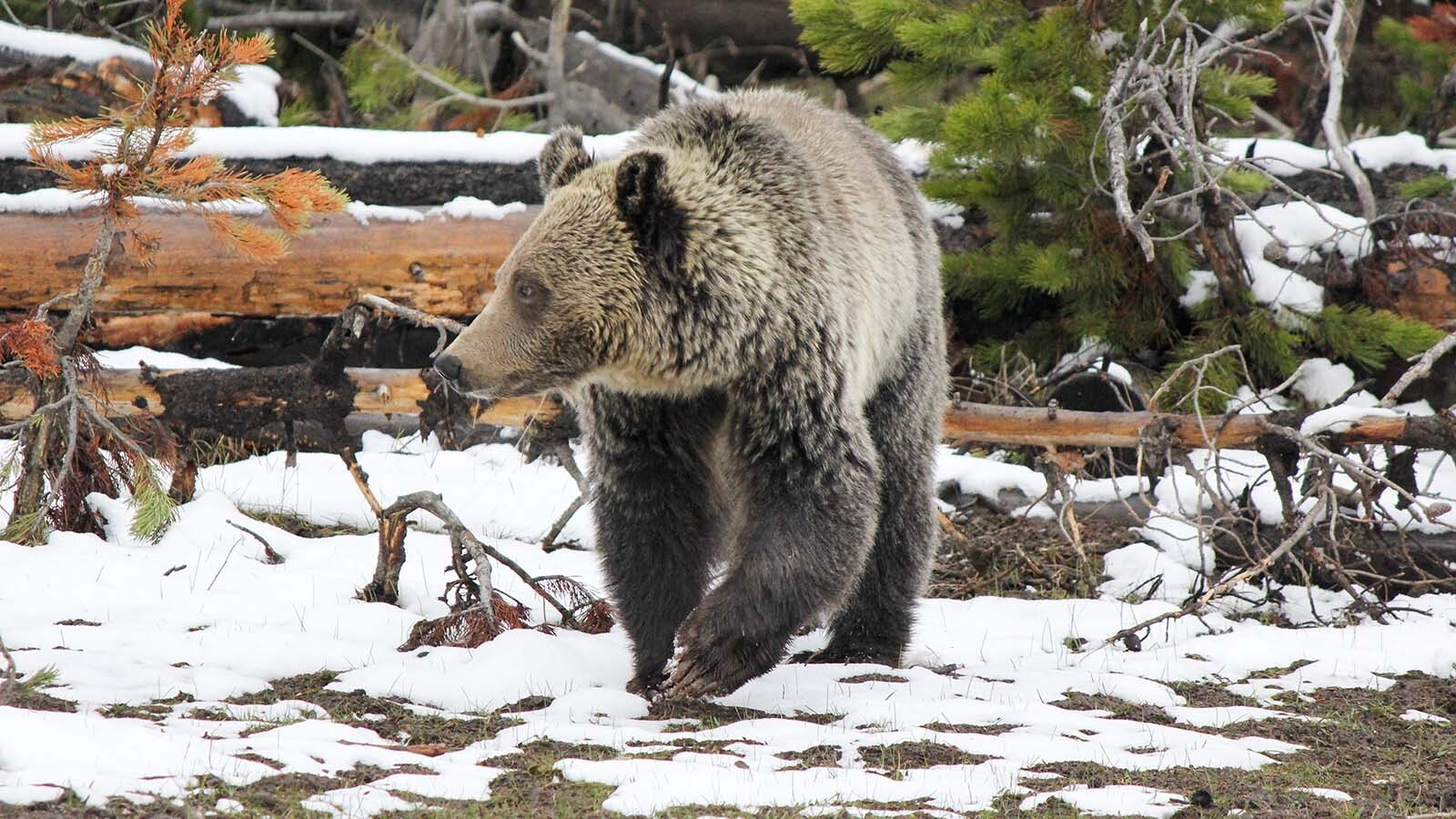As October wanes, it’s time for Wyoming’s grizzlies to start settling into their winter dens for hibernation.
Even so, don’t assume it’s all clear to hike without a care through bear territory. Biologists say some bears might be out for at least another month.
And in some rare instances, grizzlies can be encountered any month of the year.
Right about now is when grizzlies start hunkering down, Wyoming Game and Fish Large Carnivore Specialist Dan Thompson told Cowboy State Daily.
“We're starting to turn the corner as far as bear activity with some bears initiating and going into dens,” he said.
Relatively Quiet Bear Year Winds Down
Human-bear conflicts have been relatively low this fall, although there have been a couple of recent dramatic run-ins between grizzlies and hunters in Wyoming and Idaho.
On Oct. 18, a hunter shot and killed a charging male grizzly in the Island Park area of Idaho, near Yellowstone National Park.
Wildlife agents investigated the shooting and ruled it to be legitimate self-defense.
On Oct. 15, Celia Easton of Thermopolis was elk hunting in the Beartooth Mountains in northwest Wyoming when she was charged by a female grizzly with a cub.
The mother grizzly bit into one of her rubber, slip-on muck boots and pulled it off her foot, Easton told Cowboy State Daily.

Based On Food And Weather
Regarding how long individual bears stay out, that generally comes down to food sources and the weather, said Thompson and Wyoming photographer and bear watcher Jorn Vangoidtsenhoven.
There will likely be many bears out and about for at least a few more weeks, Thompson said.
“It’s based on environmental factors — especially food availability,” he said. "But we definitely still have bears active, and will continue to, into November with an outlier here or there that may still be poking around in December."
Grizzlies in the Grand Teton area try to time things perfectly to when most of the readily-available food has been gobbled, but there’s still a little vegetation left on the ground, Vangoidtsenhoven said.
“After the fall season, during which they pack on as many calories as possible, they typically start heading for higher elevations sometime late October into November,” he said.
Grizzlies still must make up their beds before they can rest, he added.
“Building or preparing their dens can take a week or even a little longer as they dig a hole to size, add some vegetation to the floor to serve as a mattress,” Vangoidtsenhoven said.
Favorite late-season menu items for grizzlies include berries, roots and big game gut piles left behind by hunters.
Retired federal ecologist Chuck Neal of Cody told Cowboy State Daily that bears in northwest Wyoming might have to depend a bit more on gut piles this year.
The availability of fresh wild berries in the area this fall is “shockingly low,” he said.
North-Facing Dens
While people try to avoid getting snowed in, grizzlies actually like it, Vangoidtsenhoven said. Snow-covered dens offer more privacy and insulation.
“Once they sense a big storm coming, they’ll head into their den,” he said. “They typically choose their den site at high elevations, and on north facing slope.
"Once a big winter storm covers the den entrance the elevation and north-facing direction will hopefully ensure that the snow covering the entrance will not melt until spring time.”
Why Go To Sleep?
Bears are essentially omnivores, or animals that can eat just about anything.
That might be part of the reason why they den for the winter, unlike other species such as wolves and mountain lions.
Wolves and mountain lions are “obligate carnivores” (pure meat-eaters), so they stay out and hunt over the winter, Thompson said.
In the wild, a relative lack of food during the winter might be what drives grizzlies to go into hibernation, bear rescuer Isaac Rempe previously told Cowboy State Daily.
He runs the Grizzly Bear Ranch Rescue in Alabama.
Rempe said that although it gets colder on his ranch than Wyomingites might think, the grizzlies there don’t hibernate.
That’s because food is always made available to them, and so the bears are more than happy to stay awake all winter and get the grub, he said.
Winter Grizzlies
Even in places like Wyoming and Montana, it’s possible to run into an awake grizzly during the winter.
Jennifer Fortin-Noreus, a U.S. Fish and Wildlife grizzly bear biologist with the University of Montana’s grizzly bear recovery program, previously told Cowboy State Daily that even winter recreationists need to be on guard.
She said that though bear encounters during the winter remain rare, “We have had reports of grizzly bears being out all months of the year.”
Mark Heinz can be reached at mark@cowboystatedaily.com.






